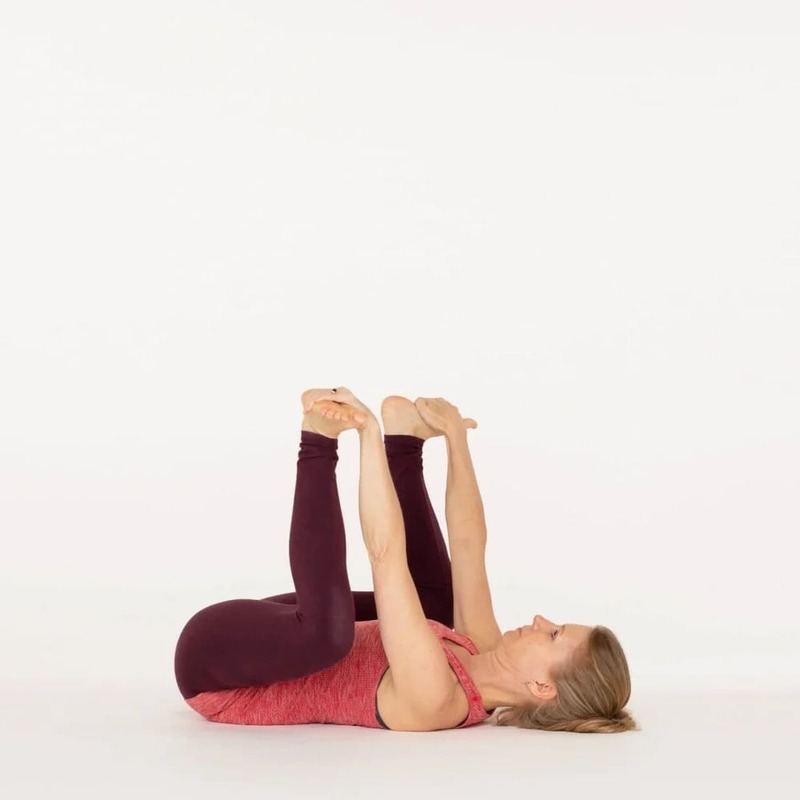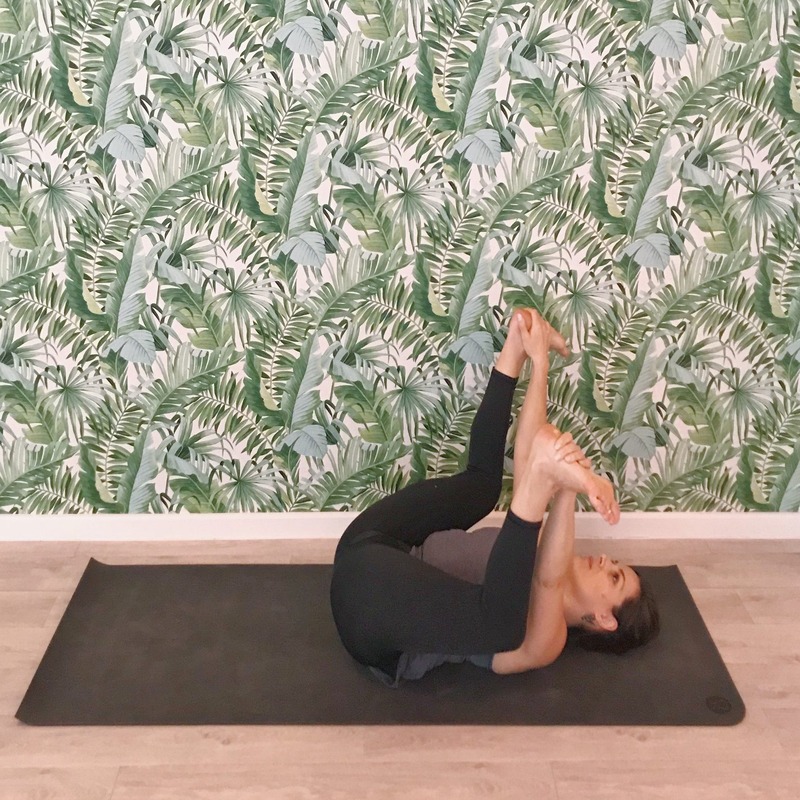Introduction to Happy Baby Pose
Yoga Baby Pose, or Ananda Balasana, is a restorative yoga asana that resembles the natural, carefree position of a baby at rest. This gentle pose serves as an excellent way to stretch and soothe the body while offering a playful respite in the midst of a yoga sequence. Both beginners and advanced practitioners can benefit from this pose, making it a versatile addition to any yoga practice. In the journey of exploring baby pose yoga, one discovers not just a posture, but a pathway to deeper relaxation and a joyful connection with the body.
Participants typically perform this pose on the floor, lying on their backs. Their knees draw toward the chest, with shins perpendicular to the ground and hands grasping the feet. The resulting posture opens the hips, stretches the lower back, and encourages ease of movement and breath in the body. It holds the potential to release stress and invite an inner sense of tranquility.
In the context of a yoga session, Happy Baby Pose often finds its place either as a warm-up to gently prepare the body for more strenuous poses or as a cool-down to relax and integrate the benefits of the practice. Its simplicity and effectiveness in promoting relaxation make it a favored pose by many exploring the vast landscape of yoga asanas.
Benefits of Happy Baby Pose
Happy Baby Pose, or Ananda Balasana, offers numerous benefits to its practitioners. From improving physical health to enhancing mental wellness, this pose is a comprehensive tool for overall well-being.
Physical Health Benefits
Happy Baby Pose addresses various physical health aspects, making it a vital part of any yoga routine:
- Joint Decompression: It helps decompress the sacroiliac joints, alleviating discomfort in your lower back and pelvis area.
- Hip Opening: The pose effectively opens the hips, promoting flexibility and reducing tightness.
- Spinal Tension Relief: Engaging in this pose releases tension from the spine and sacrum, aiding in overall spine health.
- Muscle Stretching: It stretches the pelvic floor, hamstrings, and inner groins, which can enhance your mobility.
- Shoulder Strengthening: While holding the pose, the shoulder girdle gets strengthened, enhancing the stability of shoulder blades and collarbone.
Participating in Happy Baby Pose can also serve as a counterbalance to more intense yoga flows, thereby creating a well-rounded yoga session.
Mental Health Benefits
Happy Baby Pose is not only beneficial for the body but also for the mind:
- Stress Reduction: The pose allows for significant stress relief, offering a peaceful break in a hectic day.
- Calming the Mind: By maintaining this gentle pose, it calms the mind and can reduce anxiety levels.
- Improving Focus: Engaging in regular practice of this pose may lead to improved concentration and mental clarity.
It’s especially useful at the beginning or end of yoga sessions, helping practitioners transition smoothly into or out of their yoga practice.

Step-by-Step Guide on How to Do Happy Baby Pose
Following a simple guide will help you correctly perform the Happy Baby Pose. Here’s how:
- Start by lying on your back on a yoga mat or the floor.
- Take a deep breath and as you exhale, bend your knees towards your chest.
- Spread your knees slightly wider than your torso and lift them towards your armpits.
- Keep your shins perpendicular to the floor and flex your feet.
- Stretch your arms through the inside of your knees and grab the outer edges of your feet. If reaching your feet is challenging, consider using a yoga strap for assistance.
- Press your lower back into the floor and make sure your neck and head stay relaxed on the ground.
- Hold the pose for up to one minute, focusing on steady and deep breaths.
- To release, let go of your feet and hug your knees to your chest briefly before stretching your legs out.
Proper Body Alignment and Form
Proper alignment is key in Happy Baby Pose to gain full benefits and avoid strain:
- Ensure your ankles align directly over your knees.
- Your tailbone should remain in contact with the ground throughout the pose.
- Avoid lifting your hips or straining your neck; keep these areas relaxed.
- Keep your arms drawn through the knees and maintain a gentle but firm grip on your feet.
Common Mistakes and How to Avoid Them
To avoid common pitfalls while performing Happy Baby Pose, pay attention to these tips:
- Don’t arch your back off the floor; keep your spine and tailbone grounded.
- Avoid tightening your shoulders or neck. They should remain loose and relaxed.
- Make sure you do not grip your feet too tightly; a firm yet gentle hold is sufficient.
- If you find the pose challenging, feel free to modify by holding onto your shins or using straps.
Variations of Happy Baby Pose
Exploring different variations of Happy Baby Pose can deepen your practice and cater to your body’s needs. Here are some recommended variations:
Adjusted Hand Positions
For beginners or those with limited flexibility, adjusting the hand positions can make a difference. If your spine tends to round or you feel discomfort, consider placing your hands on your shins or behind your knees instead of the feet. This small adjustment helps maintain proper spinal alignment and eases tension.
Using Yoga Straps or Wall Support
Using props can help you achieve the correct posture without strain. If reaching your feet is difficult, try using yoga straps. Wrap a strap around each foot and hold the ends with your hands. This assists in maintaining the pose without overstretching. Another option is to use a wall for support. Press the soles of your feet against a wall while in the pose to maintain balance and alignment.

Half Happy Baby Pose
Half Happy Baby Pose focuses on one side of the body at a time, which can be beneficial if you have imbalances or tightness. To do this, grab just one foot and keep the other leg extended along the floor. This allows a more intense, focused stretch on one side.
Supine Straddle Variation
For those who want to stretch further, the Supine Straddle is an excellent progression from the basic Happy Baby Pose. Start in the Happy Baby Pose, then slowly extend your legs outward. Grasp the inner thighs or knees as you do this. This pose greatly stretches the inner thighs and hamstrings. It’s particularly beneficial for improving flexibility and easing tension in the lower body.
Each variation of Happy Baby Pose provides unique benefits and offers ways to adapt the pose to your current flexibility and comfort levels. Feel free to explore these variations and find what feels best for your body.
Integrating Happy Baby Pose in Your Yoga Routine
Introducing Happy Baby Pose into your regular yoga sessions can enrich your practice significantly.
Warm-Up or Cool-Down
Happy Baby Pose is ideal for warming up or cooling down during yoga. As a start, it gently prepares the body for more intense poses. At the end, it helps release tension and integrate the session’s benefits. Incorporate it after a few minutes of light stretching. When ending, use it to unwind and embrace calmness.
Incorporation with Other Yoga Poses
Baby pose yoga pairs well with various asanas. Include it after standing poses like Warrior or Chair Pose. This helps balance active sessions with restorative relaxation. Try flowing from Bridge or Plow Pose into Happy Baby for a smooth transition. The pose’s versatility allows you to mix it into sequences for extra release and stretch.
Stay mindful of transitions into and out of the pose. Move gently to keep the body at ease. With these tips, Happy Baby Pose becomes a nurturing part of your yoga routine.
Tips to Enhance Your Happy Baby Pose Experience
Enhancing your experience with Happy Baby Pose can deepen relaxation and improve effectiveness. Here are some tips to help you make the most out of this restorative pose.
Use of Props
Props like yoga straps or bolsters can aid in achieving the proper posture without strain. If your legs don’t easily reach your hands, using a yoga strap can provide the extra length needed to hold your feet comfortably. Place a bolster under your neck or lower back for additional support if you experience discomfort in these areas.
Breathing Techniques
Focus on deep, steady breathing while in the Happy Baby Pose. Each inhale should expand your belly and each exhale should deepen the hip opening. This type of breathing helps release tension and enhances the overall calming effect of the pose.
Listening to Your Body
Pay close attention to what your body tells you during the practice. If any discomfort arises, adjust accordingly. Don’t push yourself beyond what feels comfortable. Remember, each day might feel different, so adjust the pose to meet your body’s current needs.

The Therapeutic Effects of Practicing Happy Baby Pose
Happy Baby Pose, known scientifically as Ananda Balasana, delivers profound therapeutic effects. Its simplicity disguises the extensive benefits it brings to both mind and body. Here are some core therapeutic effects you can expect from regular practice of this pose.
Enhances Sleep Quality
This restful posture promotes relaxation, facilitating a quicker and deeper sleep. Positioning similar to sleeping, it prepares the body for rest.
Eases Digestive Processes
By compressing the abdomen gently, Happy Baby Pose stimulates the digestive organs. This massage-like effect can improve bowel movement regularity and ease stomach discomfort.
Increases Spinal Flexibility
Constant practice helps to lengthen and decompress the spine. This flexibility is crucial for maintaining healthy posture and mobility as you age.
Reduces Anxiety and Stress
The pose exerts a natural calming influence on the nervous system. By opening the body physically, it simultaneously opens and soothes the mind, leading to reduced stress levels.
Promotes Joint Health
Happy Baby Pose reduces pressure on the lower back and sacroiliac joints. Regularly integrating this pose into your routine can aid in preventing and treating joint pain.
Improves Respiratory Efficiency
Encouraging deep, mindful breaths, this pose enhances lung capacity. Improved breathing can lead to better oxygen flow throughout the body.
These therapeutic effects underline the powerful, albeit gentle, impact Happy Baby Pose can have on your regular yoga practice. Through this pose, individuals can address specific physical ailments and mental stresses, contributing to a more balanced and harmonious life.


